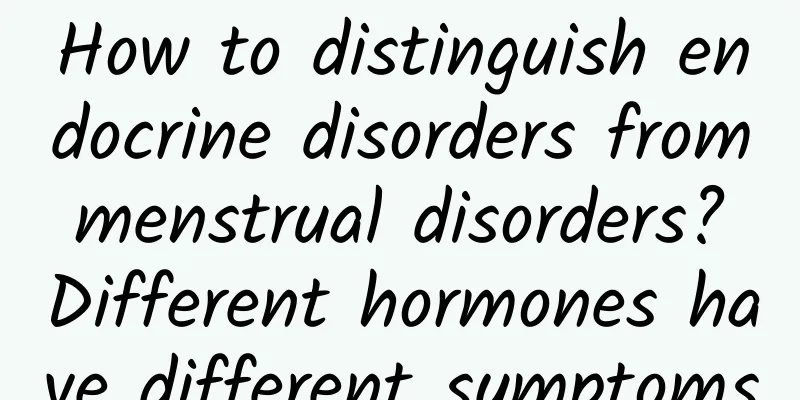What are the main symptoms of uterine fibroids?

|
Women in menopause must pay attention, because at this time they are more susceptible to diseases such as uterine fibroids. Uterine fibroids are a type of multiple benign tumors, but they also have the possibility of malignant transformation. Therefore, patients should detect and determine the treatment plan for uterine fibroids in the early stage. Therefore, it is essential to understand the symptoms of uterine fibroids in the early stage, which can help us treat this type of uterine disease more promptly. The symptoms of uterine fibroids vary according to various factors such as the location of tumor growth. Some patients may have no obvious symptoms, so this is often not conducive to the treatment of uterine fibroids. The main symptoms of uterine fibroids include: Most uterine fibroids will cause changes in menstruation, usually excessive menstrual bleeding, prolonged menstruation, shortened physiological period, etc. Due to the different growth locations and sizes of uterine fibroids, different compression symptoms may occur. Because uterine fibroids change the morphology of the uterine cavity, or because fibroids hinder the implantation of fertilized eggs, or because uterine fibroids grow in the uterine angle, hindering sperm from entering the fallopian tube, and uterine fibroids are complicated by ovarian dysfunction, etc., infertility can be caused. When there are superficial ulcers on the surface of submucosal fibroids, leucorrhea may increase. Purulent leucorrhea may occur when combined with infection. Uterine fibroids can make patients feel as if something is pressing on their abdomen, and sometimes this pressure is quite severe. Some patients can feel a pear-sized lump in the lower abdomen, which is more obvious in the morning when the bladder is full. Excessive menstrual flow or prolonged menstruation is caused by uterine fibroids that enlarge the uterus, increase the area of the endometrium accordingly, or excessively thicken the endometrium, hindering uterine contraction. These obvious menstrual changes mostly occur in submucosal fibroids and intramural fibroids. A small number of patients may experience dysmenorrhea or lower abdominal pain. It can be said that there are many symptoms of uterine fibroids. These symptoms alone seem to have nothing to do with uterine fibroids, but if there are multiple similar symptoms, it should be taken seriously. However, it is not very reliable to detect uterine fibroids only by symptoms. Regular diagnosis is also needed to detect the disease early. |
<<: What are the symptoms and dangers of endometriosis
>>: What to pay attention to after ovarian cyst surgery
Recommend
What is transabdominal potassium chloride fetal reduction and what is the operation process of transabdominal potassium chloride fetal reduction?
Transabdominal potassium chloride feticide is an ...
What medicine is good for women with irregular menstruation? How does traditional Chinese medicine treat irregular menstruation?
The occurrence of irregular menstruation makes ma...
Blood pressure soars when it’s cold, and complications are imminent! Nutritionist Cheng Hanyu: 6 types of food that lower blood pressure = the effect of 1 blood pressure pill
According to statistics from the Ministry of Heal...
How to take good care of adnexitis in daily life?
How should we take good care of adnexitis in dail...
What are the symptoms of congenital absence of vaginal infection?
We all know that the main difference between men ...
Pelvic inflammatory disease in women is mainly caused by infection
In our lives, everyone should know about pelvic i...
What is functional uterine bleeding during puberty? 5 treatment methods
What is adolescent functional uterine bleeding? H...
How harmful is cervical erosion?
Cervical erosion is a common gynecological diseas...
You exercise almost every day but your weight loss is stagnant? Experts share 5 tips to break through difficulties
You work out almost every day, but your clothing ...
What are the main symptoms of cervical hypertrophy?
Among the diseases of the cervix, cervical hypert...
Why do women have cervical erosion?
Why do women have cervical erosion? Cervical eros...
Nourish your intestines, improve allergies and enhance immunity! In addition to probiotics and vitamin C, eat beta-glucan to enhance intestinal bacteria
The new coronavirus (Wuhan pneumonia) epidemic is...
What happens if I have lower abdominal distension and pain during menstruation?
What happens if I have lower abdominal distension...
The older you get, the easier it is to gain weight! Increase your basal metabolic rate with these 5 foods
Many people should be familiar with the term &quo...
What are the chances of curing endometrial tuberculosis?
Endometrial tuberculosis is the top uterine disea...









